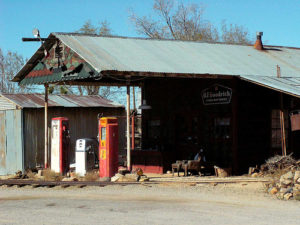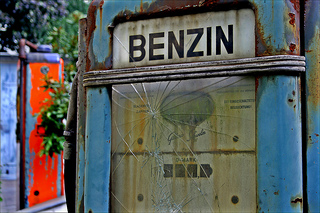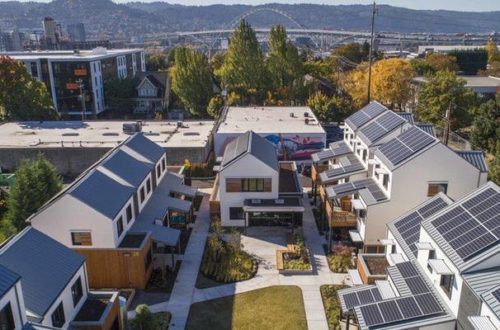(If You Are Looking to Buy a Commercial Property)
Investing in commercial real estate can be risky. Returns on the investment are dependent upon the constantly changing real estate market, natural hazards, loan terms, and/or the success of tenants, to name a few. One of the biggest risks can be related to the potential for environmental liabilities related to a property. Environmental liability can have enormous financial ramifications for an owner, and can feasibly affect the ability to lease or utilize a property. Therefore, environmental due diligence, specifically a Phase I Environmental Site Assessment (ESA), is a critical step in choosing the right property. Investors and users alike may focus on the location, structural integrity and value of a commercial property, but appropriate environmental due diligence is not only an important piece of the due diligence puzzle, it can be the most important. Here are five reasons why performing environmental due diligence should be a priority in the process of choosing and vetting commercial real estate.
1. Federal Liability Protections
The original intent of the Phase I ESA was to provide a framework for “appropriate due diligence” to aid in the protection of prospective purchasers from federal Superfund Liabilities under CERCLA legislation (Comprehensive Environmental Response, Compensation, and Liability Act, commonly known as Superfund). Per federal regulations, appropriate due diligence can protect a prospective purchaser from federal CERCLA liabilities. Even if an appropriately conducted Phase I ESA does not identify environmental concerns associated with a property, the fact that an appropriate Phase I was conducted may provide the property owner with protection from federal liabilities in the event that it is later found that the property was contaminated. Federal liabilities can reach to millions.
2. Business Risks
Granted, it is rare that commercial property is identified as being the source of contamination that rises to the level of CERCLA liability. Environmental liabilities that do not rise to the level of CERCLA liability can nonetheless be devastating to a property owner. Most common are contamination issues that are isolated to an individual property in the form of localized soil and groundwater contamination that when brought to the attention of a regulatory agency requires remedies that can cost tens of thousands to millions. Again, the original intent of the Phase I ESA is to provide protection from federal liability, but localized contamination issues may easily be identified by an appropriately executed Phase I ESA. Typical issues identified by a Phase I ESA include current and historical gas stations, dry cleaners, and industrial processes including metals processing. It is not uncommon to find that a property that is used for benign purposes today was used for much riskier purposes in the past. The best example may be a corner lot that is a restaurant today but was a gas station in the past, or a building used as a warehouse today that was used as a machine shop in the past. A well-executed Phase I ESA should uncover such historical uses.
3. Lender Requirements

Phase I Environmental Site Assessments are not required on every commercial real estate transaction, but they are almost always required when a lending institution is involved. Lenders are going to ask a lot of questions before issuing a loan for a commercial property. One step they almost always take is reviewing a Phase I ESA to make sure any hidden contamination does not affect the value of the property or affect the ability for a borrower to repay that loan. Although lenders enjoy liability protections when they are merely a lienholder on a property, the lender wants to know that if the borrower was to default on a commercial real estate loan, and the bank must foreclose, that they will not potentially be foreclosing on a contaminated property. Not only does a bank forfeit their lender protections when they foreclose and take title to a commercial property, but a bank also wants to know it can sell the property very quickly. A contaminated property is not easy to sell.
4. Future lenders/prospective purchasers will likely require one
Let’s say that you are buying a property in cash and you are a bullish investor. You may be tempted by a good deal and a quick close. This strategy may however be shortsighted. Typically cash investors will want to secure financing to free up cash or exercise the equity in one property to buy another. Or maybe your plan is to flip the property and make some quick cash. The problem with these strategies is it’s likely that a lender will become involved, sooner or later. Now you or your prospective purchaser will be forced to commit to a Phase I ESA. And, it goes without saying, as the owner, you will be responsible for any potential contamination issues discovered in that process. Such a scenario may make financing the property challenging at best and may tie up the property and your money for months or years.
5. Monetize Environmental Impairments
No matter what the scenario, if contamination is found to exist at a property, there is always a solution. Indeed, a property can be remediated under regulatory oversight and easily transacted once a “closure letter” is obtained; but other options exist. If the extent of the contamination can be quantified, usually requiring a Phase II ESA (environmental sampling), a cost for remediation can be established and an appropriate discount can be applied to the purchase price or set aside in an escrow account. Nonetheless, you are in a much better position if the contamination is discovered when you are the prospective purchaser, not the owner/seller. As a prospective purchaser, you always have the option to walk away from the deal.
At the end of the day, conducting environmental due diligence on a commercial property you are considering buying is very similar to doing a background check: before you get too involved, you want to know exactly what you are getting yourself into. Since environmental contamination often has an effect on the value of a property, lenders want to make sure they are not taking too big of a risk by lending more than the property is worth should the presence of contamination devalue the property. If you plan to sell the property relatively quickly after purchase, future lenders will want to look at your original Phase I Environmental Site Assessment, as will their prospective borrowers. Conducting your due diligence will relieve you from any liability should there be an undocumented source of contamination discovered at your site after the transaction, which would save you a lot of money and relief from the burden of having to clean it up. If the property turns out to have contamination, the environmental due diligence you performed will quantify the scope of work that needs to be done to clean up the property, allowing you to rationally decide whether or not you are able to move forward with the purchase. For all of these reasons, it is wise to do your due diligence before investing in commercial real estate.
Dennis Ironi has been working in the environmental industry for more than a decade and has been involved in more than four thousand indoor air quality projects for commercial, residential, and industrial properties. Mr. Ironi has also performed and reviewed a wide variety of Phase I and Phase II environmental site assessments for Andersen Environmental.







2 Comments
Enviro Equipment, Inc.
In the 20 years we’ve been in business, I can’t tell you how many times we’ve seen real estate deals fall through because the buyers waited to the last minute to have a Phase I ESA conducted on the property. If you’re a commercial real estate broker, you probably already know this but many novices don’t realize that before putting down the price on a piece of commercial property, make sure the property has had a recent ESA done on it.
Mi Muba
Environmental impact assessment of your every business venture is must to ensure sustainable development. Apparently it looks a costly process but its impact appears once you start your business. Environmentally assessed business need not to worry about its sustainability against seasonal odds.